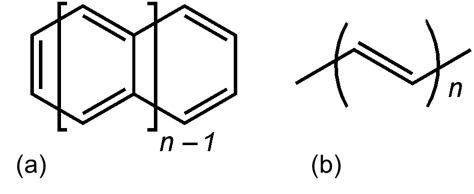Chemical Science, the flagship journal of the Royal Society of Chemistry, announced today that the article
“Density Matrix Renormalization Group Pair-Density Functional Theory (DMRG-PDFT): Singlet-Triplet Gaps in Polyacenes and Polyacetylenes,” P. Sharma, V. Bernales, S. Knecht, D. G. Truhlar, and L. Gagliardi, Chemical Science 10, 1716-1723 (2019). doi.org/10.1039/C8SC03569E
has been selected for the themed collection Most Popular 2018-2019 Physical and Theoretical Chemistry Articles:
The density matrix renormalization group (DMRG) [White and Martin 1999; Chan and Head-Gordon 2002; Ma, Knecht, Keller, and Reiher 2017] is a variational electronic structure method converging in principle to full configuration interaction (as one increases the bond dimension M) by using a sweep algorithm to optimize a matrix-product-state representation of the wave function. It allows one to use active spaces about six times larger than conventional CASSCF. But DMRG (like conventional CASSCF) is energetically unreliable without a post-SCF calculation of external correlation. In this paper we presented an inexpensive way to calculate dynamic correlation energy starting from a DMRG wave function by using pair-density functional theory (PDFT).
In the Chemical Science paper, we applied this new approach, called DMRG-PDFT, to study singlet–triplet gaps in polyacenes and polyacetylenes that require active spaces larger than the feasibility limit of the conventional CASSCF method. The results matched reasonably well with the most reliable literature values, and they have only a moderate dependence on the compression of the initial DMRG wave function. Furthermore, DMRG-PDFT is significantly more affordable than other commonly applied way of adding additional correlation to DMRG, such as DMRG followed by multireference perturbation theory.

(a) n-acenes, (b) n-polyacetylene
More recently, our group has applied the DMRG-PDFT method to free-base iron porphyrin, Fe(P):
“Multiconfiguration Pair-Density Functional Theory for Iron Porphyrin with CAS, RAS, and DMRG Active Spaces,” C. Zhou, L. Gagliardi, and D. G. Truhlar, Journal of Physical Chemistry A 123, 3389-3394 (2019). doi.org/10.1021/acs.jpca.8b12479
In this paper, we used MC-PDFT to calculate the energetic order of four states of Fe(P) with active spaces ranging from 8 active electrons in 6 active orbitals to 34 active electrons in 35 active orbitals, and the largest active space is only affordable for DMRG-PDFT. DMRG-PDFT gives the correct ground state, regardless of the selection of active space, and it provides an efficient and accurate approach to treat electron correlation in large molecules like for iron porphyrin.
A third application of DMRG-PDFT will be published shortly:
“Magnetic Coupling in a Tris-hydroxobridged Chromium Dimer Occurs Through Ligand-Mediated Superexchange in Conjunction with Through-Space Coupling,” by P. Sharma, D. G. Truhlar, and L. Gagliardi, to be published.
DMRG-PDFT calculations are performed with the OpenMolcas 8.3 software package using an implementation based on the QCMaquis software suite in OpenMolcas 8.3. To carry out the calculations, one has to enable the DMRG function while compiling. When one installs OpenMolcas and enables DMRG, one automatically downloads the source files and necessary libraries of QCMaquis.